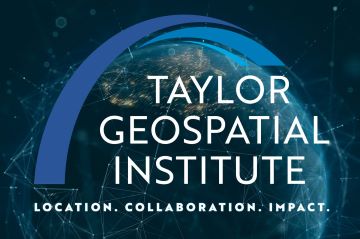TGI-Led �˻�ֱ�� Finds Shifting Climate Regions Leading to Hotter, Drier Conditions Across Kenya
Maggie Rotermund
Senior Media Relations Specialist
maggie.rotermund@slu.edu
314-977-8018
Reserved for members of the media.
Findings have significant implications for agricultural land use and ecosystem management and highlight the urgent need for climate adaptation strategies in Kenya
ST. LOUIS - �˻�ֱ�� published in Regional Environmental Change has shown that as climate zones shift toward hotter and drier conditions, ecological diversity will decline, posing a major threat to terrestrial ecosystems with far-reaching social and ecological impacts.

The study, “Shifting climate zones and expanding tropical and arid climate regions across Kenya (1980-2020),” on April 5.
The research team analyzed Kenya's geographic distribution and arrangement of climate zones between 1980-2020.
Over that time, tropical climate regions expanded from 91 to 93% with over 13,000 square kilometers shifting from alpine and temperate regions to tropical ones, and arid climate regions expanded from 72 to 81%, a roughly 50,000 km2 shift from humid and semi-humid-to-semi-arid to arid regions.
“With a better understanding of how climate shifts occurred in an environment like Kenya, we can estimate how food security will be impacted in other regions with similar geographic patterns,” said Enbal Shacham, Ph.D., professor of behavioral science and health education at Saint �˻�ֱ�� University’s College for Public Health and Social Justice and acting director of strategic initiatives for the Taylor Geospatial Institute.
The first author is Ted J. Lawrence, a former post-doctoral fellow at the . Shacham is the paper’s senior author.
The research team looked at how temperature and precipitation trends changed over time and how the geographic distribution and arrangement of climate zones in Kenya shifted due to those trends.
The team focused on Kenya because rain-fed agriculture is central to the country’s economy and it is a key food-producing country for the East African region.
Data showed that in addition to the 1-degree Celsius increase in temperature, there was a decrease in precipitation during the country’s primary rainy season (Spring) and an increase in precipitation in the secondary rainy season (Fall).
An area of 76,346 square kilometers shifted from cooler to hotter zones, while 1,298 square kilometers shifted from hotter to cooler zones. Human-induced climate change significantly alters the spatial-temporal patterns of climate zones, driving agricultural land use and ecosystem change. Changes to the climate zone alter the biological and physical properties of the ecosystem, leading to a change in what an ecosystem can support.
The researchers reviewed data from a variety of sources, including:
- Average monthly and annual temperature precipitation time series of Kenya between 1975 and 2020, obtained from the Climate Change Knowledge Portal
- Georeferenced average monthly temperature and precipitation across Kenya with a 5-kilometer resolution during 1976-1980, 1996-2000 and 2016-2020 from the TerraClimate dataset
- A digitized version of the georeferenced boundaries of the Kenyan ACZs documented in 1982 and obtained through the IGAD Climate Prediction and Application Centre Portal.
The team assessed the average annual and seasonal temperature and precipitation trends to understand Kenyan climate change between 1975-2020 before creating climate reference maps. The maps represented temperature and precipitation zones in 1980, 2000 and 2020.
Human-induced climate change in Kenya resembles global trends, the research found, with certain regions being more sensitive to the forces of climate change.
As climate zones shift toward hotter and drier conditions, ecological diversity will decline, posing a major threat to terrestrial ecosystems with far-reaching social and ecological impacts.
Information on climate change and shifting climate zones in this paper can be used to investigate a variety of ecological questions and aid in the effort to reach the United Nations’ Sustainable Development Goals.
Additional authors include Justin M. Vilbig, a geospatial data scientist in SLU’s Department of Earth and Atmospheric Sciences and TGI; Geoffrey Kangogo, a Ph.D. student in SLU’s College for Public Health and Social Justice; Eric M. Fevre, University of Liverpool, UK, and International Livestock �˻�ֱ�� Institute, Kenya; Sharon L. Deem, Institute for Conservation Medicine at the Saint �˻�ֱ�� Zoo; Ilona Gluecks, International Livestock �˻�ֱ�� Institute, Kenya; and Vasit Sagan, Ph.D., associate professor of Earth and Atmospheric Sciences at Saint �˻�ֱ�� University and acting director of TGI.
This work was supported in part by the Taylor Geospatial Institute and a seed research grant from the at Washington University in St. �˻�ֱ��. Furthermore, this research was also supported in part by the , the Department for International Development, the Economic & Social �˻�ֱ�� Council, the Medical �˻�ֱ�� Council, the Natural Environment �˻�ֱ�� Council, and the Defence Science & Technology Laboratory, under the Zoonoses and Emerging Livestock Systems (ZELS) programme, grant reference BB/L019019/1.
This study also received support from the CGIAR One Health initiative “Protecting Human Health Through a One Health Approach,” which was supported by contributors to the . The authors thank the University of Liverpool’s Open Access team for support of the CC-BY open access license for this article.
Taylor Geospatial Institute
The TGI consortium includes Saint �˻�ֱ�� University, the Donald Danforth Plant Science Center, Harris-Stowe State University, University of Illinois Urbana-Champaign, Missouri University of Science & Technology, University of Missouri-Columbia, University of Missouri-St. �˻�ֱ��, and Washington University in St. �˻�ֱ��. Collectively, these institutions encompass more than 5,000 faculty and 100,000 students.
TGI aims to advance geospatial science through multi-institutional, interdisciplinary collaborations to create innovative, real-world solutions to grand societal challenges. It supports a collaborative research and training environment and while shaping the future of geospatial science in the U.S.

















